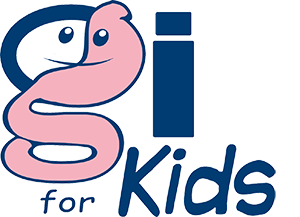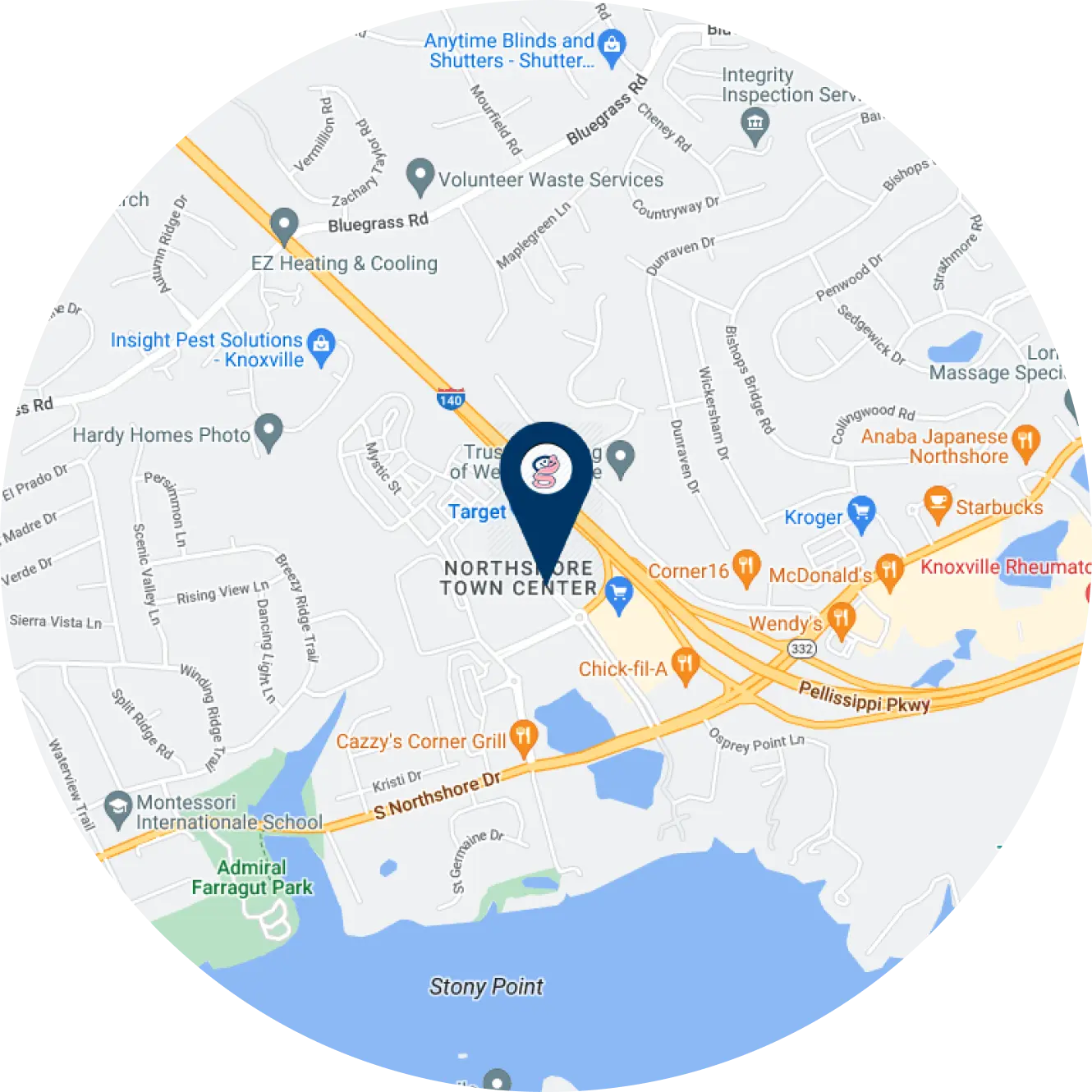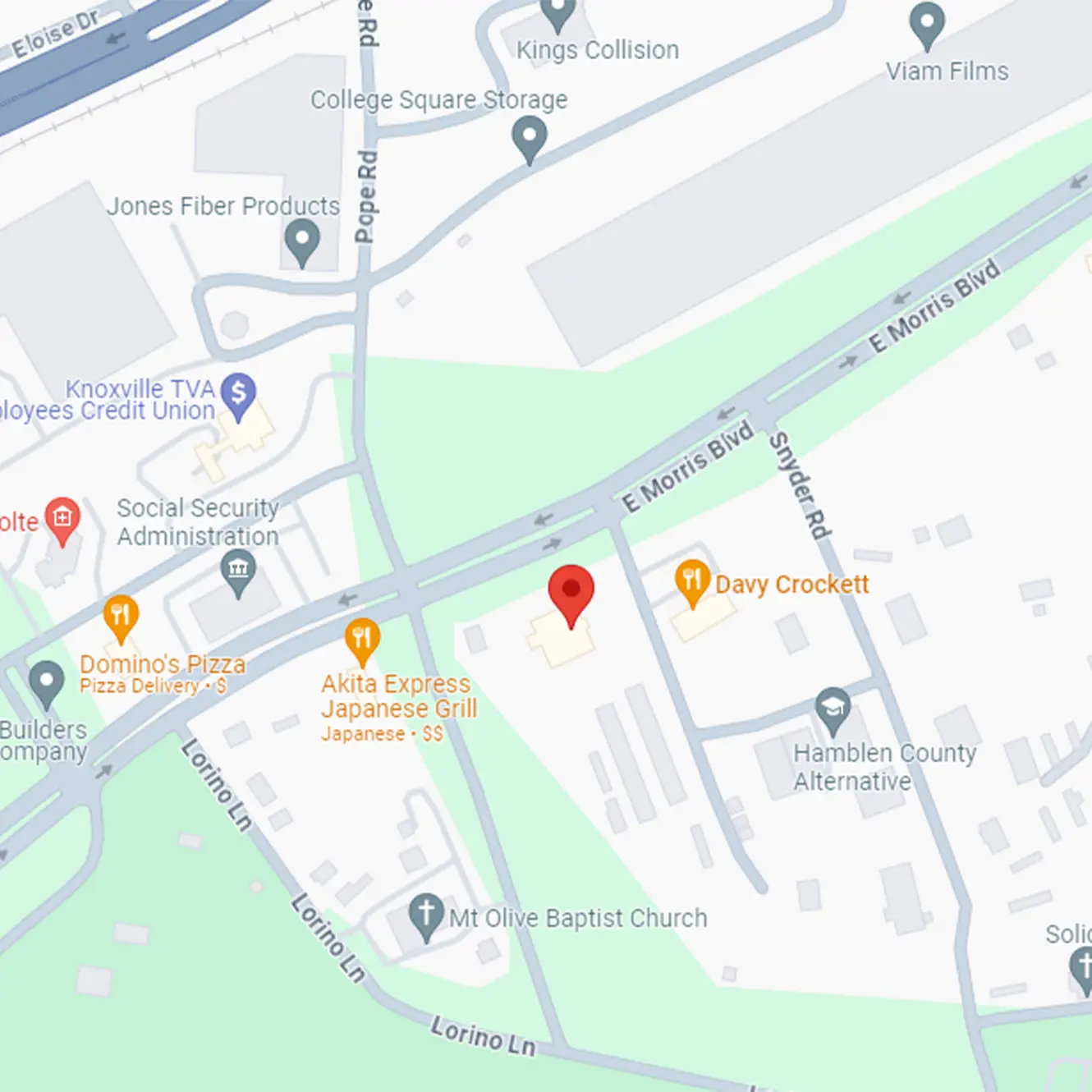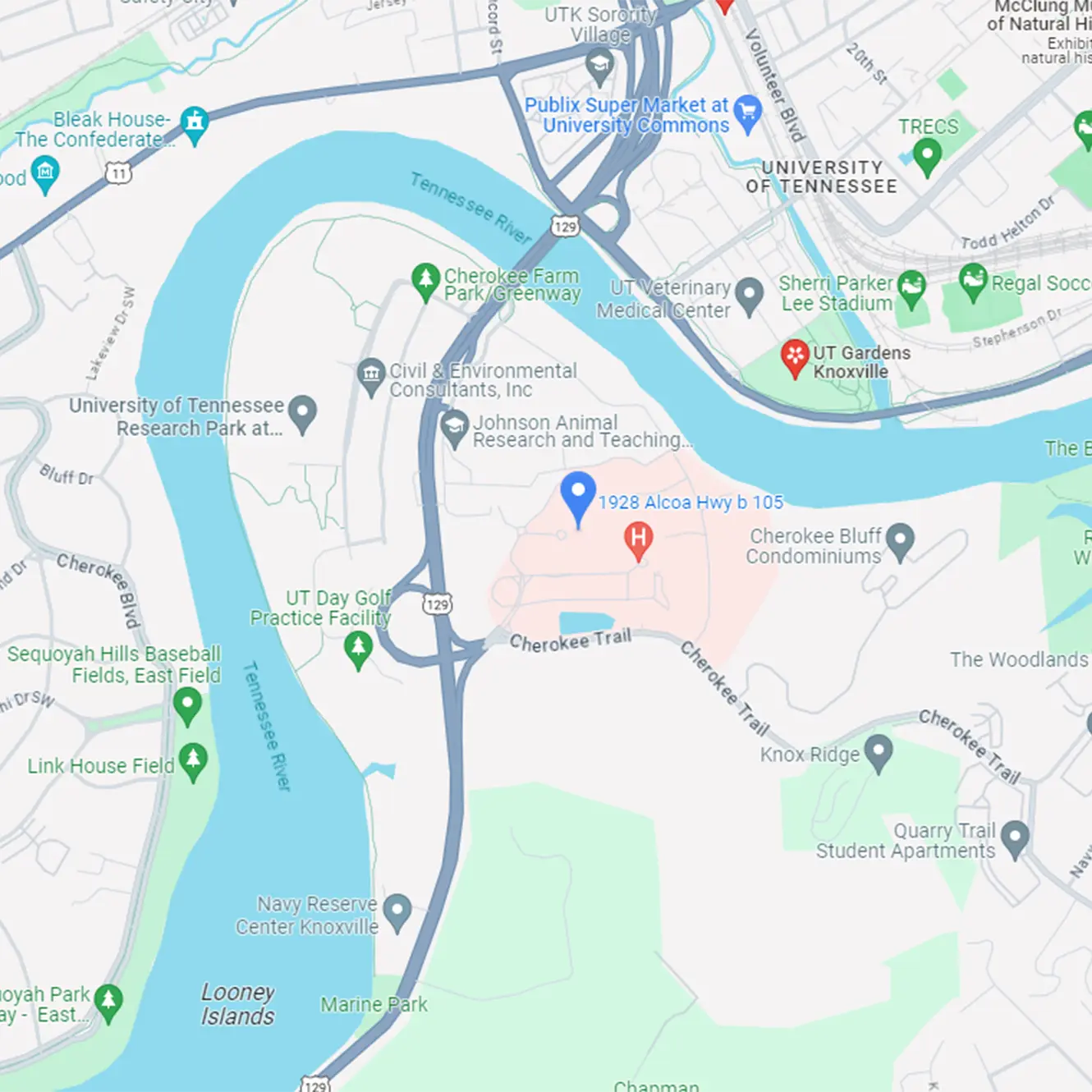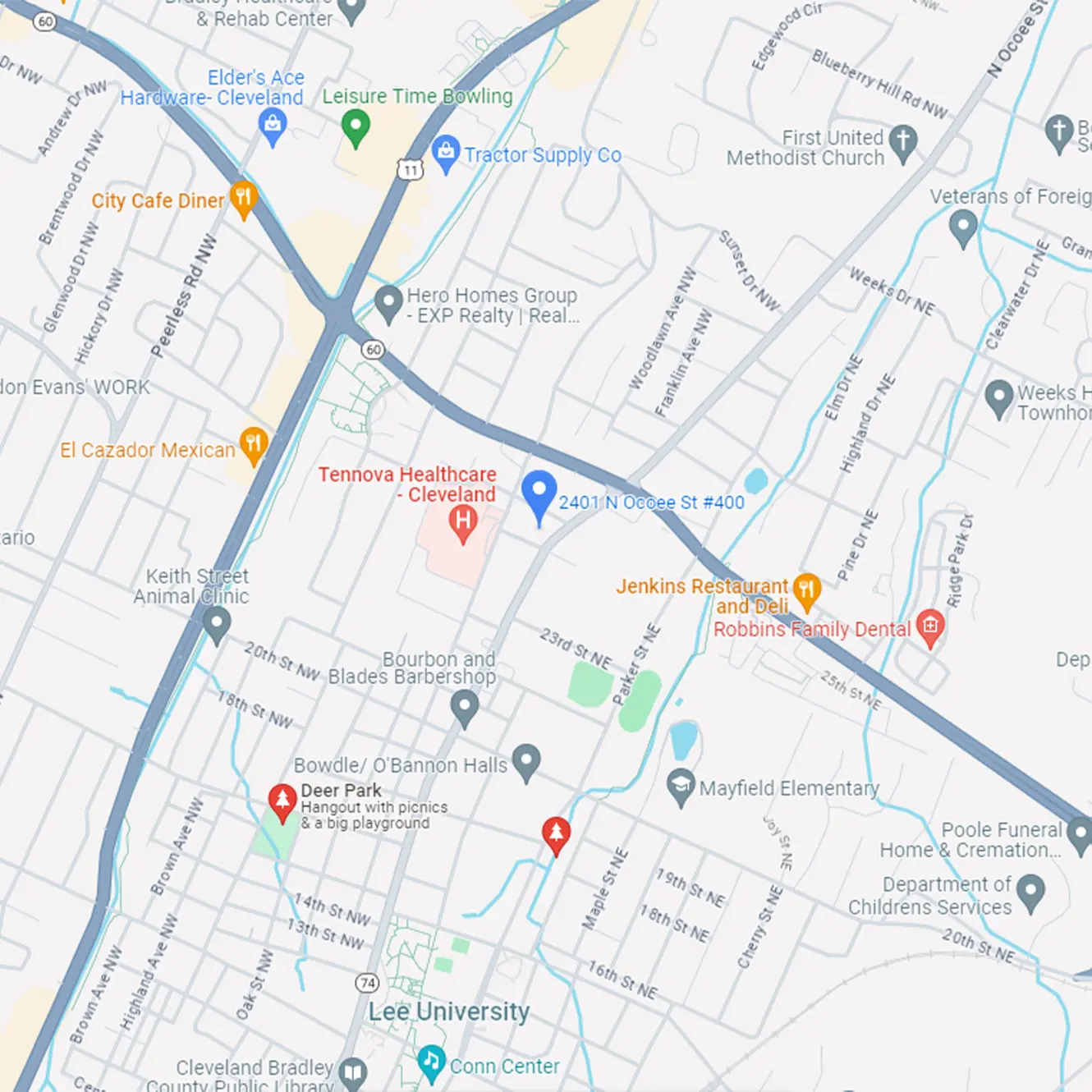Fats in the Diet
A lot of people think of fats as unhealthy, but the truth is our body needs fat. It is important to know the different types of fat and which ones are good for you body!
SATURATED FATTY ACIDS
All fatty acids are made up of carbon and hydrogen bonds with a carboxyl group at one end. Saturated fatty
acids do not have any double bonds meaning they are fully “saturated” with hydrogen and are usually solid at
room temperature.
Chemically, a saturated fatty acid looks like this:

Saturated fats are found in animal products like red meat and dairy as well as coconut oil and chocolate. The fat
we eat affects the LDL, HDL, and triglyceride levels in our blood. Although LDL is known as “bad cholesterol” and
HDL is known as “good cholesterol”, these two things are actually proteins that carry cholesterol around our
bodies. LDL takes cholesterol to be stored in the cells and arteries. HDL takes cholesterol to your liver so your
body can excrete what it does not need. Triglycerides are stored in your body to be used later as energy. In
addition to the triglycerides your body gets from fat you eat, it also makes them from carbohydrates in the diet.
When carbohydrates or saturated fats are consumed in excess, your body stores the extra triglycerides as
adipose tissue.
Saturated fat increases LDL (bad cholesterol) and should be limited in the diet. Some types of saturated fats,
however, also increase your HDL (good cholesterol) and lower triglyceride levels therefore, a modest amount of
saturated fats is acceptable in the diet. It is recommended that less than 7% of total calories come from
saturated fats.
TRANS-FATTY ACIDS
Trans-fats are found naturally in small amounts but the majority of these fatty acids in our diet are man-made
through a process called hydrogenation. Hydrogenation occurs when hydrogen is chemically added to an
unsaturated fat, like vegetable oil, to make it more solid. This practice is widely used in the food industry to
prolong the shelf life of food. Trans-fats can be “hidden” in processed foods like crackers, popcorn, baked goods,
and fast food. Like saturated fats, trans-fats increase your LDL (bad cholesterol). They also decrease your HDL
(good cholesterol) and increase your triglycerides. Trans-fats are strongly associated with increased risk of heart
disease and should be avoided in the diet.
UNSATURATED FATTY ACIDS
Unsaturated fats do have double bonds and chemically, look like this:
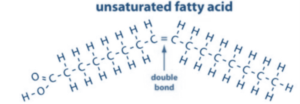
If there is one double bond, it is called monounsaturated. If there is more than one double bond, it is called polyunsaturated.
Monounsaturated fatty acids
Foods such as meat and dairy products contain saturated and monounsaturated fats. Monounsaturated fats are
also found in avocados, nuts and olive oil. These plant sources, common in the Mediterranean diet, are beneficial
when replaced for saturated fats in the diet. It is thought that replacing saturated fats with monounsaturated
fats will decrease LDL (bad cholesterol) without decreasing HDL (good cholesterol). Like saturated fats, your body
can make monounsaturated fats from carbohydrates you eat. It is important to consume a good balance of
carbohydrates and healthy fats without excess of either.
Polyunsaturated fatty acids
Unlike saturated and monounsaturated fats which can be made in the body, polyunsaturated fats must come
from our diet. Because our body cannot make these fats they are called essential fatty acids. There are two types
of polyunsaturated fatty acids: omega-6 fatty acids and omega-3 fatty acids. We need both of these in our diet,
however the American diet tends to be too high in omega-6 fatty acids and too low in omega-3 fatty acids.
Omega-6 fatty acids
Food sources for omega-6 fatty acids include plant oils such as soybean, safflower, sunflower, and corn. Omega6
fatty acids lower LDL (bad cholesterol) and triglycerides while raising HDL (good cholesterol). Although some
omega-6 fatty acids are necessary in the diet, excess intake leads to increased inflammation which is associated
with many diseases. Omega-6 rich vegetable oils such as soybean oil are found in a lot of processed foods that
are typical in the American diet. For this reason, our diet tends to be too high in omega-6 fatty acids.
Omega-3 fatty acids
Food sources for omega-3 fatty acids include fatty fish such as salmon and tuna and plant sources such as canola
oil, walnuts, and flax seed. EPA and DHA are omega-3 fatty acids primarily found in fish oil. There are many
health benefits associated with EPA and DHA including anti-inflammatory process and proper brain development
and function. Two servings of fatty fish per week is recommended to maintain adequate intake.
Fat Functions
Absorb vitamins A, D, E, and K
Coat cell membranes and protect the
organs
Regulate body temperature Promote growth and brain development
Reduce inflammation
Provide energy, especially during
prolonged exercise
Tips for Healthy Fat Intake
Kids need 20-35% of total calories from fat
Once over the age of 2 years, transition to low fat dairy products and offer a variety of fruits,
vegetables, whole grains and lean meats
Know how to read and understand food labels:
“0g Fat” means there is less than 0.5 g of fat per serving
“0g Trans-fat” means there is less than 0.5 g trans-fat per serving
“Low Fat” mean there is 3 g of fat or less per serving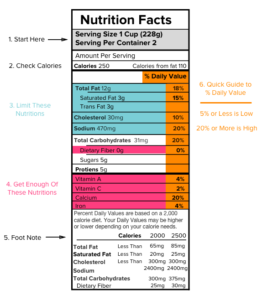 “Reduced Fat” means there is 25% less total fat and 2 g or less of
“Reduced Fat” means there is 25% less total fat and 2 g or less of
saturated fat per serving
It is important to understand these labels because the amount
of fat can add up quickly, especially if multiple servings are being
consumed.
Written by: Madden Wilson, RDN, LDN, CNSC.
To schedule an appointment with our Registered Dietitian, please call 865-546-3998

